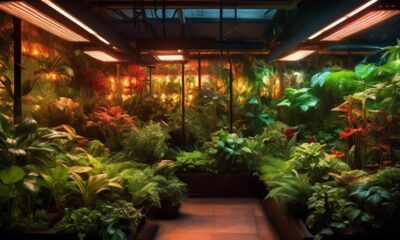Decor
Why Do Animals Represent Chinese New Year?
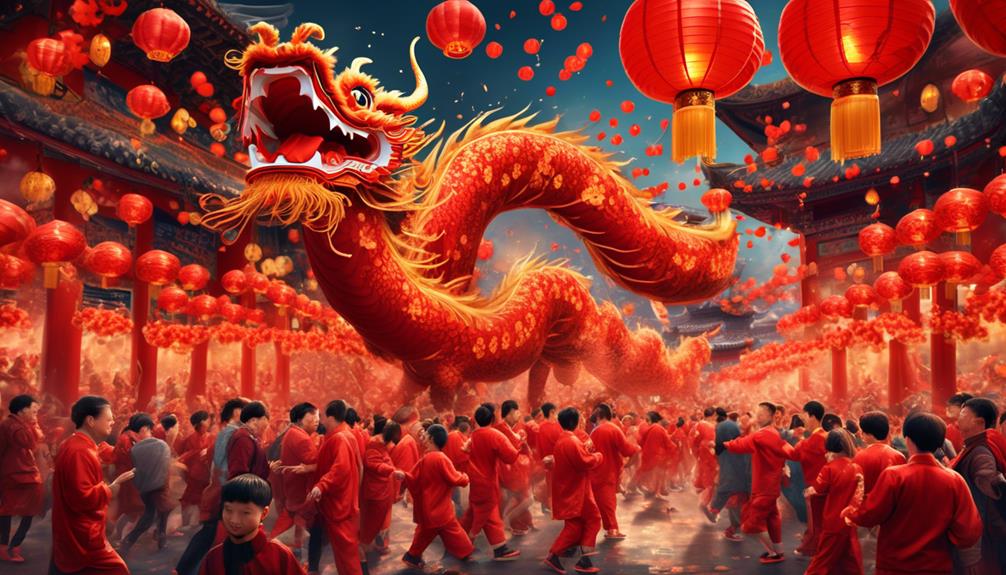
Were you aware that in Chinese New Year celebrations, every year is symbolized by a distinct animal? This longstanding tradition occupies a cherished position within Chinese cultural heritage.
The animals of the Chinese zodiac are not chosen randomly, but rather based on a fascinating legend known as the Great Race. In this race, the order in which the animals finished determined their position in the zodiac cycle. Each animal represents unique traits and characteristics, which are believed to influence the year ahead.
The symbolism of these animals, along with the festivities and customs surrounding them, adds depth and meaning to the Chinese New Year celebrations. Join us as we delve into the intriguing world of why animals represent Chinese New Year.
Key Takeaways
- Animals represent the Chinese New Year due to the origins and legend of the Chinese zodiac, which is based on celestial bodies and involves twelve animals.
- Each animal in the Chinese zodiac has symbolic meanings and traits associated with it, such as the rat representing resourcefulness and adaptability, and the ox symbolizing diligence and perseverance.
- The selection of zodiac animals is based on ancient legends, observation of animal characteristics in nature, and a twelve-year cycle, reflecting cultural traditions surrounding these animals.
- The Chinese zodiac has cultural significance as it influences personality, career, and relationships, and is celebrated during Chinese New Year as a means of divination and understanding Chinese culture.
Origins of the Chinese Zodiac
The origins of the Chinese Zodiac can be traced back to ancient Chinese mythology and astrology, providing a fascinating insight into the cultural and historical significance of this traditional practice. Chinese astrology is based on the belief that the positions and movements of celestial bodies have a profound influence on human affairs and natural events. The Chinese zodiac, consisting of twelve animals, is a key component of Chinese astrology.
According to legend, the Jade Emperor, the ruler of heaven, decided to hold a race to determine the order of the zodiac animals. The rat, being small and clever, convinced the kind-hearted ox to carry it across the river. Just as they reached the other side, the rat jumped off the ox's back and claimed first place. The other animals followed in the order they finished the race: the ox, tiger, rabbit, dragon, snake, horse, sheep, monkey, rooster, dog, and pig.
Each animal in the Chinese zodiac is believed to possess certain characteristics that are associated with the year of their birth. These characteristics are said to influence a person's personality, career, relationships, and overall fortune. The Chinese zodiac animals have become deeply ingrained in Chinese culture and are celebrated during the Chinese New Year, where each year is associated with a specific animal. The Chinese zodiac isn't only a means of divination, but also a way to understand and appreciate the rich cultural heritage of China.
The Legend of the Great Race

After exploring the origins of the Chinese Zodiac, it's intriguing to delve into the legend of the Great Race, a captivating tale that explains the order of the zodiac animals. The animal zodiac story begins with a mythological race organized by the Jade Emperor to determine the order of the animal zodiac. The importance of the order lies in the belief that it influences the characteristics and destiny of individuals born in each animal year.
In this legendary race, the clever Rat hitched a ride on the diligent Ox's back and jumped ahead to win first place. The strong and loyal Ox came in second, followed closely by the powerful Tiger. The graceful Rabbit, known for its agility, managed to cross the finish line in fourth place. The majestic Dragon, though capable of flying, paused to help some creatures along the way and arrived fifth.
This captivating legend not only entertains but also imparts valuable life lessons. It teaches us the importance of using our wits, being adaptable, and embracing our unique strengths. Understanding the order of the zodiac animals adds depth to the Chinese New Year celebrations, as it allows us to connect with our own zodiac sign and appreciate the qualities associated with it.
Symbolism and Traits of Each Animal
Exploring the symbolism and traits of each animal in the Chinese Zodiac provides insight into the unique characteristics and qualities associated with each zodiac sign. The Chinese Zodiac is based on a twelve-year cycle, with each year being represented by a different animal. These animals have symbolic meanings and astrological characteristics that shape the personality traits of individuals born under their respective zodiac signs.
To better understand the symbolism and traits of each animal, let's take a look at the following table:
| Animal | Symbolic Meanings | Astrological Characteristics |
|---|---|---|
| Rat | Resourcefulness, adaptability | Intelligent, charming, quick-witted |
| Ox | Diligence, perseverance | Patient, reliable, methodical |
| Tiger | Courage, power | Brave, confident, competitive |
| Rabbit | Kindness, sensitivity | Gentle, compassionate, artistic |
| Dragon | Strength, good luck | Energetic, charismatic, ambitious |
| Snake | Wisdom, intuition | Wise, mysterious, seductive |
| Horse | Freedom, adventure | Energetic, independent, enthusiastic |
| Sheep | Harmony, creativity | Gentle, artistic, compassionate |
| Monkey | Cleverness, curiosity | Intelligent, witty, mischievous |
| Rooster | Confidence, reliability | Practical, organized, honest |
| Dog | Loyalty, honesty | Loyal, trustworthy, protective |
| Pig | Generosity, abundance | Compassionate, optimistic, sincere |
How Animals Are Chosen for Each Year
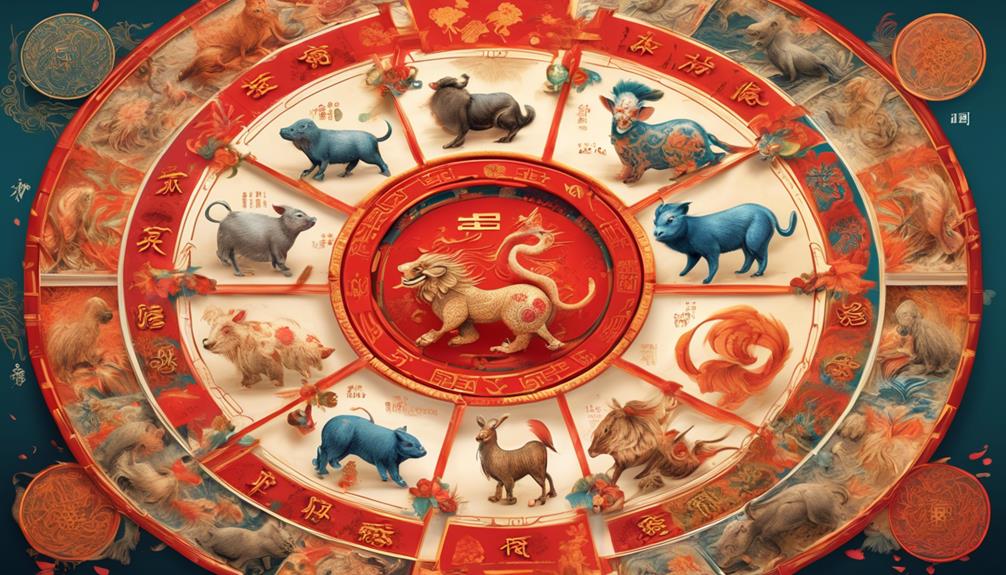
To determine which animal represents each year in the Chinese Zodiac, a specific system based on a twelve-year cycle is used. This system is deeply rooted in the significance of animal symbolism and is a reflection of the cultural traditions surrounding zodiac animals.
Here is how animals are chosen for each year:
- Ancient legends and myths: The selection of zodiac animals is based on ancient legends and myths that have been passed down through generations. These stories provide insights into the characteristics and traits associated with each animal.
- Observation of nature: The Chinese people have long observed nature and its patterns to gain a better understanding of the world around them. The selection of zodiac animals is influenced by the behaviors and characteristics of these animals in nature.
- Astrology and astronomy: The alignment of the stars and planets also plays a role in determining the zodiac animal for each year. Astrological calculations and astronomical events are considered in the decision-making process.
- Cultural beliefs: Chinese culture places great importance on harmony and balance. The selection of zodiac animals is guided by the belief that each animal brings its own unique energy to a given year, contributing to the overall balance of the zodiac cycle.
- Historical significance: Some zodiac animals are chosen based on their historical and cultural significance. For example, the Dragon is considered a symbol of power and prosperity, while the Rat is associated with resourcefulness and intelligence.
The Cultural Significance of Animal Representations
Based on the ancient legends, observations of nature, astrology and astronomy, cultural beliefs, and historical significance that determine the animals representing each year in the Chinese Zodiac, it's clear that these animal representations hold significant cultural importance. Animal symbolism has played a crucial role in Chinese culture for centuries, serving as a means to convey deeper meanings and messages.
In Chinese culture, animals are believed to possess certain qualities and characteristics that influence the personality traits and destiny of individuals born in a particular year. Each animal in the Chinese Zodiac represents a unique set of qualities and attributes that are believed to shape the lives of those born under its influence. For example, the rat is associated with intelligence and resourcefulness, while the dragon symbolizes power and good fortune.
These animal representations are deeply intertwined with cultural traditions and customs. During Chinese New Year celebrations, various rituals and traditions are observed to honor the animal of the current year. People decorate their homes with images of the animal, wear clothing or accessories featuring its likeness, and even perform dances and parades in its honor. These practices serve to reinforce the cultural significance of animal representations and strengthen the connection between humans and nature.
Furthermore, animal symbolism in Chinese culture extends beyond the realm of astrology. It's also prevalent in art, literature, and folklore. Animals are often used as metaphors or symbols to convey moral lessons, philosophical ideas, and societal values. For example, the monkey is often portrayed as a trickster figure, representing cleverness and mischief.
Animal-related Festivities and Customs

Animal-related festivities and customs play a significant role in Chinese culture, serving as important traditions that are observed during various celebrations and events. These customs not only add vibrancy and joy to the festivities, but also reflect the deep-rooted beliefs and values of the Chinese people.
- Animal themed decorations and costumes: During Chinese New Year and other festive occasions, the streets and homes are adorned with vibrant decorations featuring animals, such as lanterns in the shape of zodiac animals and red paper cutouts depicting various animals. People also dress up in animal costumes to participate in parades and performances.
- Traditional animal dances and performances: One of the most iconic customs is the lion and dragon dances. These performances involve dancers donning elaborate lion or dragon costumes and mimicking the movements of these animals. The dances are believed to bring good luck and ward off evil spirits.
- Symbolic animal meanings: Each animal in the Chinese zodiac has its own symbolic meanings and characteristics. For example, the rat represents intelligence and resourcefulness, while the tiger symbolizes power and bravery. These symbolic meanings are often incorporated into the festivities and customs.
- Animal-inspired rituals: Animal-related rituals are also conducted during certain festivals. For instance, during the Lantern Festival, people release paper lanterns into the sky, symbolizing the release of worries and troubles. This act of releasing lanterns is believed to bring good fortune and blessings.
- Animal symbolism in traditional arts and crafts: Animals are often depicted in traditional Chinese arts and crafts, such as paintings, calligraphy, and embroidery. These artworks not only showcase the artistic skills of the Chinese people, but also carry symbolic meanings associated with the animals portrayed.
Animal Zodiac Compatibility and Relationships

In exploring the rich traditions of animal-related festivities and customs in Chinese culture, it's fascinating to delve into the realm of Animal Zodiac Compatibility and Relationships.
The Chinese zodiac is a 12-year cycle, with each year represented by a specific animal. Each animal has its own symbolism and characteristics that are believed to influence compatibility and relationships.
According to zodiac compatibility analysis, certain animal signs are considered to have a natural affinity for one another, while others may clash. For example, the Rat is said to be compatible with the Ox and the Dragon, as they share similar traits such as ambition and intelligence. On the other hand, the Rat may have a challenging relationship with the Horse, as their personalities and values may differ significantly.
Understanding the animal zodiac symbolism can help individuals navigate their relationships and make informed decisions. By knowing their own zodiac sign and that of their partner, they can gain insights into potential areas of compatibility and areas that may require compromise. This knowledge can be particularly valuable in romantic relationships, where understanding each other's strengths and weaknesses can foster understanding and harmony.
Modern Interpretations and Adaptations
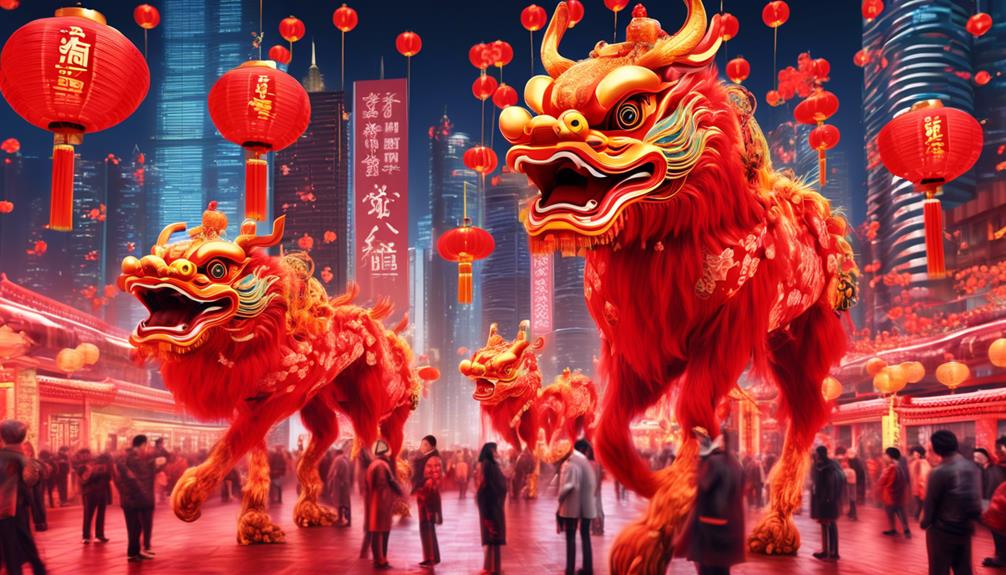
Modern interpretations and adaptations of animal zodiac compatibility and relationships have emerged in recent years, reflecting the evolving dynamics of contemporary society. These new interpretations take into account the cultural influences that shape our understanding of relationships and compatibility.
Here are some key features of these modern interpretations:
- Gender Equality: The traditional animal zodiac compatibility interpretations often assign specific roles and characteristics to each gender. However, modern interpretations challenge these stereotypes and emphasize the importance of equality and mutual respect in relationships.
- LGBTQ+ Inclusivity: With the growing acceptance and recognition of diverse sexual orientations and gender identities, modern interpretations of animal zodiac compatibility now include considerations for LGBTQ+ individuals. This shift reflects the changing societal attitudes towards love and relationships.
- Multicultural Influences: In our increasingly globalized world, cultural influences from different parts of the globe have started to shape the way we understand and interpret animal zodiac compatibility. These modern interpretations incorporate elements from various cultural traditions, creating a more inclusive and diverse perspective.
- Psychological Insights: Modern interpretations of animal zodiac compatibility also draw on psychological theories and insights. These interpretations delve deeper into personality traits, communication styles, and emotional compatibility, providing a more nuanced understanding of relationships.
- Relationship Dynamics: The fast-paced nature of modern life has influenced the way we approach relationships. Modern interpretations of animal zodiac compatibility consider factors such as career aspirations, financial compatibility, and shared values, reflecting the changing dynamics of contemporary society.
These modern interpretations and adaptations of animal zodiac compatibility and relationships highlight the ongoing evolution of cultural influences and societal dynamics. By incorporating diverse perspectives and psychological insights, they offer a more comprehensive and relevant understanding of relationships in the modern world.
Frequently Asked Questions
What Are the Specific Customs and Traditions Associated With Each Animal in the Chinese Zodiac?
When discussing the specific meanings and symbolism behind each animal in the Chinese zodiac, it's important to understand the cultural significance of animal representations in Chinese astrology.
Each animal is associated with certain traits and characteristics that are believed to influence a person's personality and destiny. These associations have been passed down through generations, shaping the way people perceive themselves and others.
Are There Any Regional Variations or Differences in the Way Animals Are Chosen for Each Year?
Regional variations in the selection of animals for each year in the Chinese zodiac exist due to the diverse cultural significance attributed to different animals in various regions. These variations reflect the unique beliefs, folklore, and historical context of each region.
For example, in some regions, the choice of animals may be influenced by local myths or legends. Such variations add depth and richness to the celebration of Chinese New Year, making it a truly diverse and culturally significant festival.
How Do the Animal Representations in the Chinese Zodiac Affect Everyday Life and Decision-Making in Chinese Culture?
In Chinese culture, the animal representations in the Chinese zodiac have a profound influence on everyday life and decision-making. These symbolic creatures, each with their unique traits and characteristics, shape our understanding of ourselves and others. They guide our interactions, relationships, and even career choices.
The effects of the zodiac animals extend beyond the New Year celebrations, permeating various aspects of Chinese society. Their influence is deeply ingrained, and their presence is felt in our daily lives.
Are There Any Specific Rituals or Ceremonies During Chinese New Year That Are Directly Related to the Animal Representations?
During Chinese New Year, there are specific rituals and ceremonies directly related to the animal representations in the Chinese zodiac. These rituals hold great significance in Chinese culture and are rooted in deeply held cultural beliefs surrounding the animal zodiac.
These rituals and ceremonies often involve offerings and prayers to the specific animal of the year, as well as symbolic gestures and actions meant to bring good luck and fortune for the upcoming year.
What Are Some Common Misconceptions or Myths About the Chinese Zodiac and Its Animal Representations?
Misinterpretations of the Chinese zodiac and its animal representations abound, leading to many common misconceptions and myths. Symbolic meanings are often lost or misinterpreted, giving rise to inaccurate beliefs.
For example, some mistakenly believe that the zodiac animals determine a person's personality traits, when in fact, they only represent the year of their birth.
Understanding the true significance and context of the Chinese zodiac is essential to dispel these misconceptions and appreciate its rich cultural heritage.
How Do Animals Play a Role in Chinese New Year Celebrations Compared to Other Holidays?
Animals play a significant role in Chinese New Year celebrations for several reasons for Chinese New Year. Each year is associated with an animal sign, and parades featuring lion and dragon dances are common. In contrast, other holidays may incorporate animals symbolically, but not as prominently as in Chinese New Year.
Conclusion
In conclusion, the animals that represent Chinese New Year hold a deep cultural significance and are chosen based on their symbolism and traits. The legend of the Great Race further adds to the mystique surrounding the Chinese Zodiac.
As we delve into the festivities and customs related to these animal representations, we realize their compatibility and relationship dynamics also play a role.
Overall, the animal representations in Chinese New Year embody a rich tapestry of tradition and meaning, creating a vibrant celebration that continues to captivate us.
- About the Author
- Latest Posts
Introducing Ron, the home decor aficionado at ByRetreat, whose passion for creating beautiful and inviting spaces is at the heart of his work. With his deep knowledge of home decor and his innate sense of style, Ron brings a wealth of expertise and a keen eye for detail to the ByRetreat team.
Ron’s love for home decor goes beyond aesthetics; he understands that our surroundings play a significant role in our overall well-being and productivity. With this in mind, Ron is dedicated to transforming remote workspaces into havens of comfort, functionality, and beauty.
Decor
Can You Paint Over Mirrors?
Fascinate with how painting over mirrors can transform them into stunning pieces of art, adding a touch of creativity to your space.

Yes, painting over mirrors can enhance their appearance greatly while allowing for creative expression. To begin, clean the mirror with a damp cloth, sketch the design, and apply a thin layer of white gesso as a primer. Opt for enamel or acrylic glass paints for a professional finish. Make sure thorough drying before adding a sealant for protection. Experiment with different techniques to achieve unique results. Remember, using the right materials and following proper steps are essential for a successful mirror painting project. Want to discover more about techniques, paint types, and sealing options?
Key Takeaways
- Clean mirror thoroughly before painting to ensure proper adhesion.
- Apply white gesso primer to create a suitable painting surface on the mirror.
- Use enamel or acrylic glass paints designed for longevity and durability.
- Allow the painted mirror to fully dry and cure for a lasting finish.
- Seal the painted mirror with a protective sealant to maintain the design and colors.
Surface Preparation
Before delving into the actual painting process, we must ensure the mirror surface is properly prepared for best results. To start, cleaning the mirror thoroughly with a damp microfiber cloth is essential to remove any dirt or grime that could interfere with the paint adhesion.
Once the mirror is clean, using a water-soluble pencil to sketch out the design you intend to paint helps in visualizing the final outcome. Remember, leaving certain areas unpainted can create intriguing reflection effects.
Applying a thin layer of white gesso acts as a primer, enhancing the adherence of the acrylic paint to the mirror surface. This step is vital for a lasting finish. Allow the white gesso to dry for a minimum of 24 hours before proceeding with the painting process.
Proper surface preparation sets the foundation for a successful mirror painting project, ensuring a smooth and durable result that showcases your chosen design effectively.
Choosing the Right Paint

In order to guarantee a successful mirror painting project, it's important to carefully select the right paint that's specifically formulated for glass surfaces. When choosing the right paint for your mirror project, consider the following:
- Glass Paint: Opt for enamel or acrylic paints that are designed for use on glass surfaces. These paints provide better adhesion and durability, ensuring your mirror painting lasts.
- Deco Art and Americana Glass Paints: These brands offer a wide range of colors and finishes specifically tailored for glass painting. Their quality formulations can provide a professional-looking result on your mirrors.
- White Acrylic Paint as Primer: Using white gesso or primer before painting your mirror can help prevent peeling and ensure proper adhesion of the paint to the glass surface. This step is vital for achieving a smooth and long-lasting finish on your mirror.
Selecting the right paint is essential for achieving permanent and professional results when painting over mirrors. Experiment with different types to find the one that works best for your specific project.
Applying Primer

Let's begin by discussing the process of applying primer when painting over mirrors.
When looking to paint a mirror surface, using white gesso as a primer is crucial. White gesso serves as a foundational layer that promotes adhesion between the mirror and the paint, preventing issues like peeling or chipping.
To apply the primer, start by thinly coating the mirror with white gesso and allowing it to dry thoroughly, ideally overnight. This creates a suitable surface for painting by providing a base that the paint can adhere to effectively.
White gesso, a common art supply, can be easily obtained from art supply stores or online, making it a convenient choice for mirror painting projects.
Techniques for Painting Mirrors
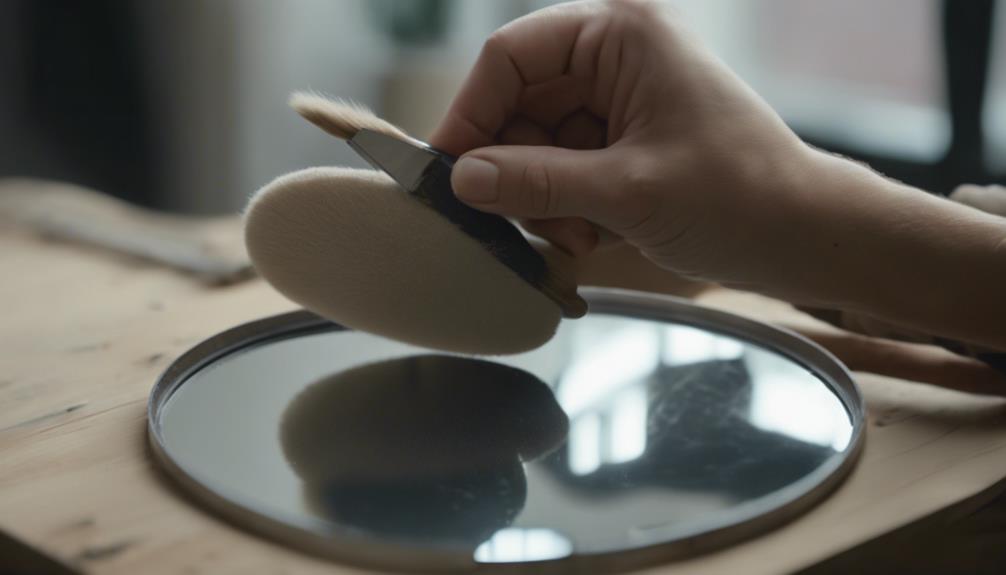
When tackling the task of painting mirrors, it's crucial to explore various techniques to achieve desired results.
From layering colors to using cotton swabs for precision, the process involves a blend of creativity and skill.
Mirror Surface Preparation
Preparing the mirror surface for painting involves ensuring it's thoroughly cleaned with a damp cloth to remove any dirt or residue.
Once the surface is clean, using a water-soluble pencil to sketch your desired design on the mirror can serve as a helpful guide during the painting process.
Applying a thin coat of white gesso primer before painting is essential to help the acrylic paint adhere better to the mirror surface.
Painting Techniques
After preparing the mirror surface with the necessary cleaning and priming steps, exploring different painting techniques can enhance the overall look and creativity of your painted mirror.
When it comes to painting mirrors, using acrylic paint designed for glass surfaces or priming with white gesso can guarantee a durable and long-lasting finish. Experiment with various paint types such as enamel, acrylic, or specialized glass paints to achieve unique effects on your mirror.
Consider using chalk paint, enamel spray paint, or glass paints for distinct finishes. Before painting, it's important to prep the mirror surface with white gesso or a glass primer to promote adhesion and longevity of the paint.
When painting mirrors, try different techniques such as layering colors to create depth, using Q-tips for intricate details, and incorporating reflection effects to add dimension. These techniques can elevate the aesthetic appeal of your painted mirror and allow for personalized creativity in your artistic endeavors.
Drying and Curing Process
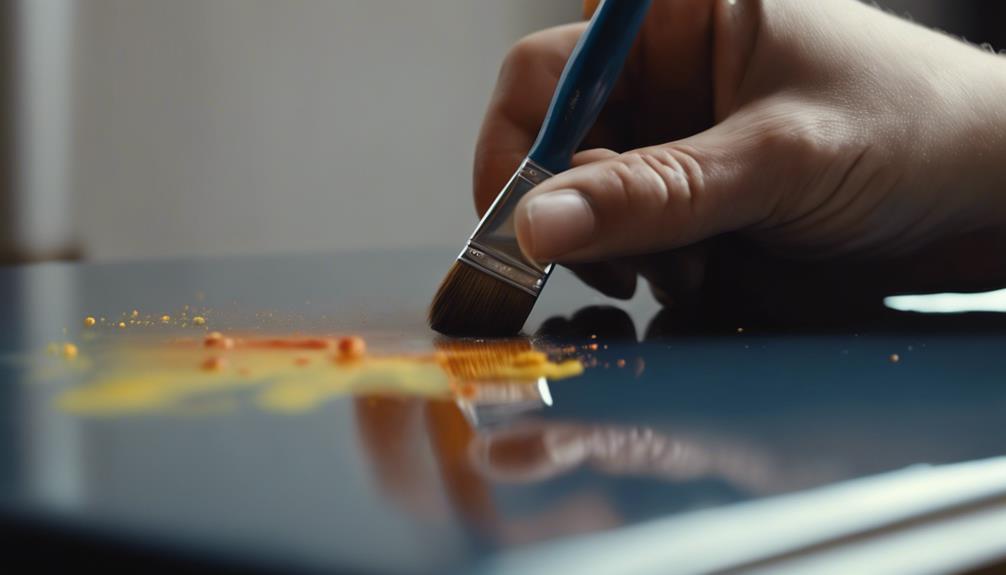
To guarantee a successful painting project on a mirrored surface, it's essential to understand the significance of the drying and curing process.
Here are some key points to keep in mind:
- Different Paint Types: Acrylic paint typically dries faster, usually within an hour, compared to oil paint, which may require more time to fully cure on a mirrored surface.
- Importance of Proper Drying: Make sure the painted mirror is completely dry before handling or displaying it. This precaution helps prevent smudges or damage to the design, ensuring a pristine finish.
- Longevity and Maintenance: Properly cured paint not only secures longevity and durability on the mirror surface but also allows for regular cleaning and maintenance without compromising the artwork.
Adding Sealant for Protection

When adding sealant for protection to painted mirrors, it's crucial to choose a non-toxic sealant suitable for the type of paint used on the mirror. This step helps to safeguard the painted surface from scratches, peeling, and other forms of damage that could compromise the mirror's appearance. By applying sealant, you can enhance the durability of the paint, extending the lifespan of your painted mirror. Additionally, a properly sealed painted mirror is easier to clean and maintain over time, ensuring its continued beauty.
To guarantee a smooth finish, wipe off any excess sealant carefully with a soft cloth. This will help maintain the integrity of the sealant layer while keeping your painted mirror looking its best. By taking these protective measures, you can enjoy your painted mirror for years to come, with its vibrant colors and design preserved for all to admire.
Tips and Inspiration
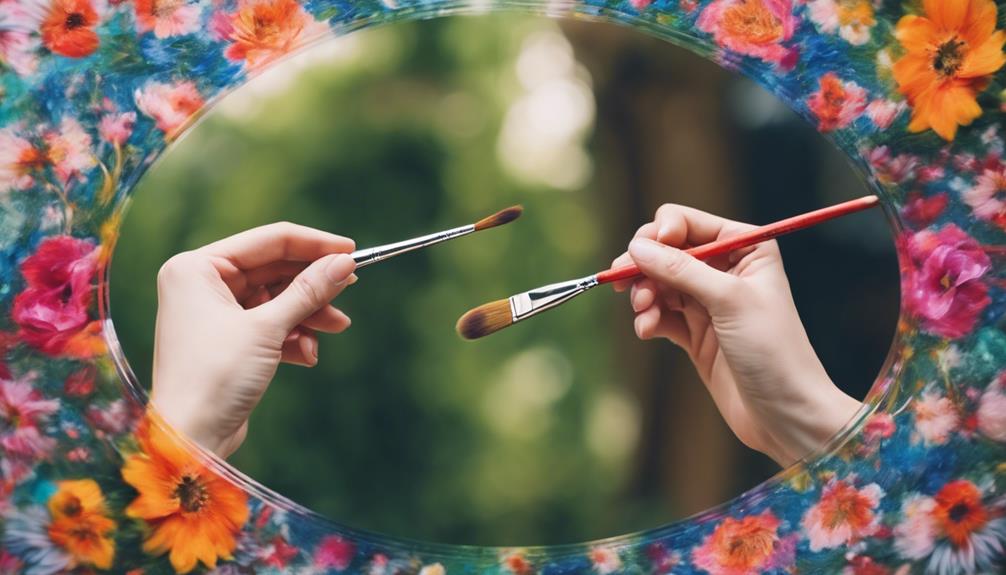
Let's explore some creative tips and inspiration for painting mirrors. When diving into mirror painting projects, it's crucial to gather ideas from various sources like TikTok, where talented creators share innovative techniques and designs to spark your creativity.
- Choose the Right Paint:
Opt for enamel or acrylic paint specifically formulated for glass surfaces. These paints adhere well to glass, providing long-lasting results that won't chip or peel easily.
- Preparation is Key:
Before painting, prime your mirror with white gesso. This step guarantees better paint adhesion and prevents peeling over time.
- Finishing Touches:
After painting, consider applying a sealant or varnish to protect the painted surface and enhance its longevity. This extra layer acts as a shield against scratches and helps maintain the vibrancy of the colors used.
Experiment with different paint types, techniques, and tools like painters tape, rubbing alcohol for cleaning, Chalk Paint for a matte finish, and spray paints for a quick application to transform your mirror into a stunning decor piece.
Frequently Asked Questions
What Kind of Paint Will Stick to a Mirror?
When considering what kind of paint will adhere well to a mirror, it's important to opt for enamel or acrylic paint specifically designed for glass surfaces.
To enhance adhesion, using a white gesso primer before painting is advisable.
Glass paints, chalk paints, and enamel spray paints are all viable options for painting over mirrors.
Transparent glass paint may necessitate heat setting for improved adherence.
Specialized products like Glass Paint Perfection or Gallery Glass Window Color Textured Paint are formulated for mirror painting.
Can You Cover a Mirror With Paint?
Yes, covering a mirror with paint is possible using glass paint, enamel paint, or acrylic paint formulated for glass surfaces.
Glass paint offers a unique finish that maintains reflection.
Enamel paint, known for durability, provides a long-lasting solution for mirror painting.
Acrylic paint, when used with a primer like white gesso, can create a painted mirror surface.
Consider using spray glass paint for a smooth, professional-looking finish when painting over mirrors.
What Kind of Paint Will Stick to Glass?
When considering what kind of paint will adhere to glass, options like:
- Acrylic glass paints
- Enamel paints
- Chalk paints
- Glass-specific paints such as Deco Art or Americana
Additionally, enamel or looking glass spray paints can create a mirror-like finish on glass surfaces. For specialized painting on mirrors, options like Glass Paint Perfection or Gallery Glass Window Color Textured Paint offer specific solutions.
Using a primer like white gesso before painting can enhance paint adhesion to glass surfaces.
How to Prep a Mirror for Painting?
When prepping a mirror for painting, start by cleaning the surface thoroughly and sketching out your design with a water-soluble pencil.
To enhance reflection effects, consider leaving some areas unpainted. Apply a primer like white gesso, allowing it to dry for 24 hours, followed by a thin layer of white acrylic paint as a base.
This process guarantees adhesion and longevity for your painted design on the mirror.
Conclusion
To sum up, painting over mirrors is possible with the right preparation and techniques. Remember, Rome wasn't built in a day, so take your time and follow the steps outlined above for a successful project.
With a little patience and attention to detail, you can transform your mirrors into unique pieces of art that reflect your personal style.
So go ahead, grab your brushes and let your creativity shine!
- About the Author
- Latest Posts
Introducing Ron, the home decor aficionado at ByRetreat, whose passion for creating beautiful and inviting spaces is at the heart of his work. With his deep knowledge of home decor and his innate sense of style, Ron brings a wealth of expertise and a keen eye for detail to the ByRetreat team.
Ron’s love for home decor goes beyond aesthetics; he understands that our surroundings play a significant role in our overall well-being and productivity. With this in mind, Ron is dedicated to transforming remote workspaces into havens of comfort, functionality, and beauty.
Decor
Step-by-Step DIY Nest Creation
Take your crafting skills to the next level with this step-by-step guide on creating a stunning DIY nest – the perfect decorative touch!
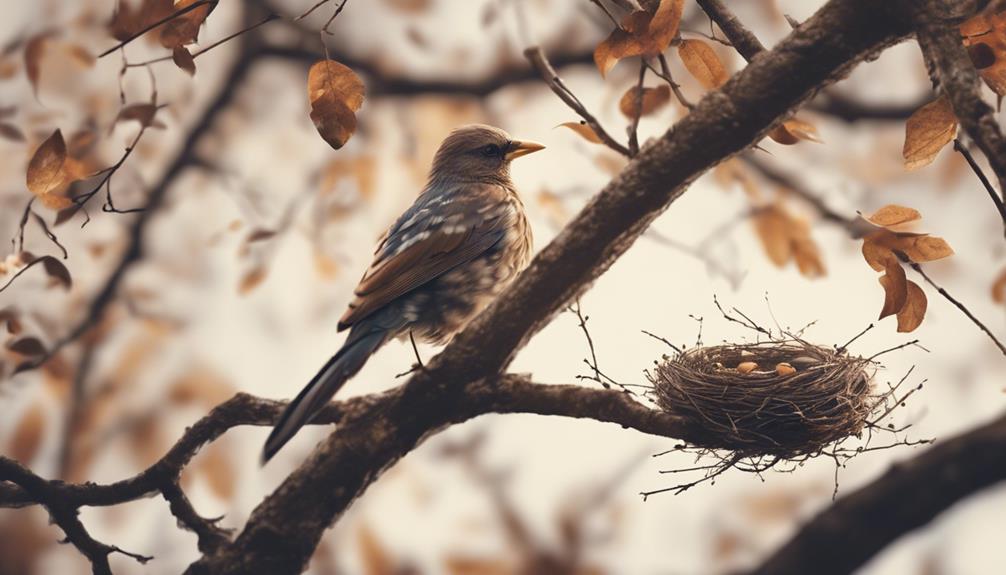
To create a DIY nest, gather Spanish moss, twigs, and pine straw. Cut and layer the moss over twigs, securing with a glue gun. Add sticks and green moss for structure and aesthetics. Weave pine straw in a circular pattern for support. Shape the nest with glue for stability. Complete drying guarantees durability. Display creatively for a decorative touch. Achieve authenticity by crafting a sturdy and comfortable nest. Mastering the art of weaving materials meticulously will lead to a beautiful result worth the effort.
Key Takeaways
- Use Spanish moss and twigs for flexibility and authenticity.
- Layer moss over twigs, secure with glue for durability.
- Incorporate sticks and green moss for structural integrity.
- Weave pine straw in a circular pattern for support.
- Shape nest, dry glue for stability, display creatively.
Gather Essential Materials
Let's begin by gathering the essential materials needed for creating a DIY nest. To craft a cozy nest, we'll require Spanish moss, twigs, a glue gun, and wire cutters.
The Spanish moss, available in shades of grey and green, will add a natural touch to our nest. Twigs will provide structure and authenticity to mimic a real bird's nest.
The glue gun is essential for securely attaching the materials together, ensuring our nest stays intact. Wire cutters will help shape the wire for the nest's structure, allowing us to customize the size and shape as needed.
When selecting the materials, it's important to choose moss colors that complement each other to create a visually appealing nest. Using a bowl as a mold for shaping the nest will give it a defined structure.
Safety is paramount when working with hot glue and moss to prevent burns, so caution should be exercised throughout the crafting process. By gathering these materials, we're ready to commence the journey of creating our DIY nest.
Prepare the Base With Spanish Moss
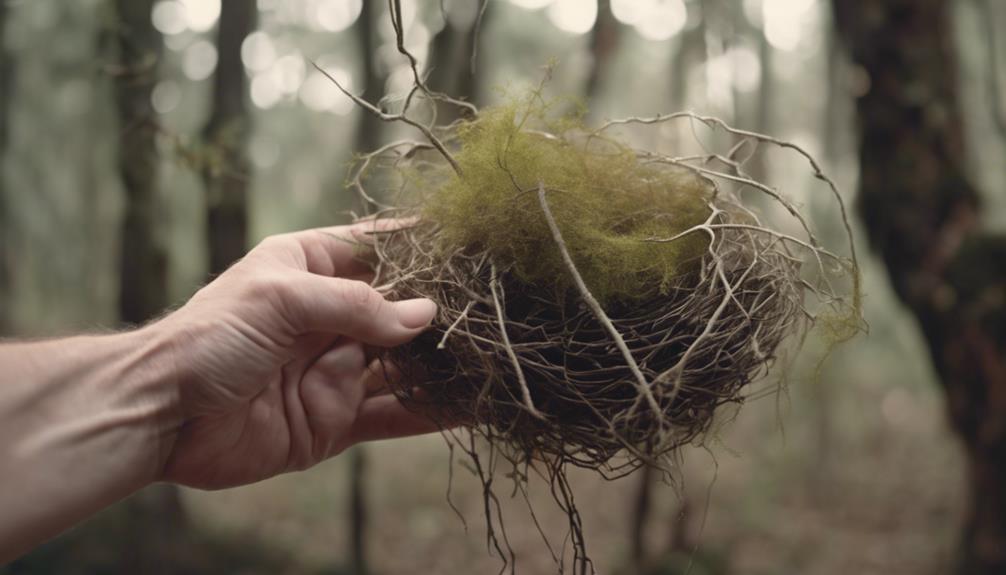
To create a sturdy foundation for our DIY nest, we'll prepare the base using Spanish moss. Spanish moss is a popular choice for creating the base of DIY nests due to its flexibility and natural appearance. By cutting the Spanish moss into small, manageable pieces, we can easily shape and layer it to form a solid base for our nest.
Layering the Spanish moss over twigs not only adds to the natural look but also provides a strong foundation for the nest structure.
Securing the Spanish moss in place is vital for the nest's durability. Using a glue gun to attach the Spanish moss ensures that the base remains intact and well-formed, preventing it from unraveling or shifting. This method of securing the moss allows for a more stable and long-lasting DIY nest construction.
Weave in Sticks and Green Moss
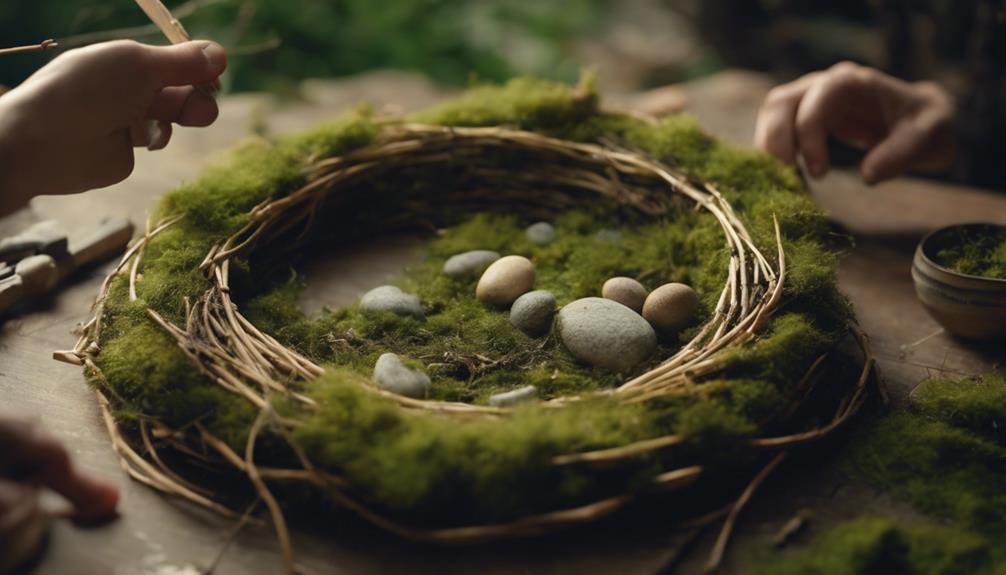
Weaving sticks into the nest enhances its structural integrity and imbues it with a natural charm. Sticks provide a solid framework for the nest, making it sturdy and reliable for the bird's habitation. Green moss, on the other hand, adds a touch of nature's beauty, creating a lush and realistic appearance. By strategically weaving sticks and incorporating green moss, we make the nest not only functional but visually appealing.
To get a better idea of how sticks and green moss can be used to create a beautiful nest, refer to the table below:
| Aspect | Description |
|---|---|
| Sticks | Provide structural support |
| Green Moss | Enhances visual appeal |
As you weave in the sticks and green moss, remember that the combination of these elements will not only make the nest more authentic but also visually appealing. This step is essential in achieving a well-crafted and inviting bird nest.
Add Pine Straw in Circular Pattern
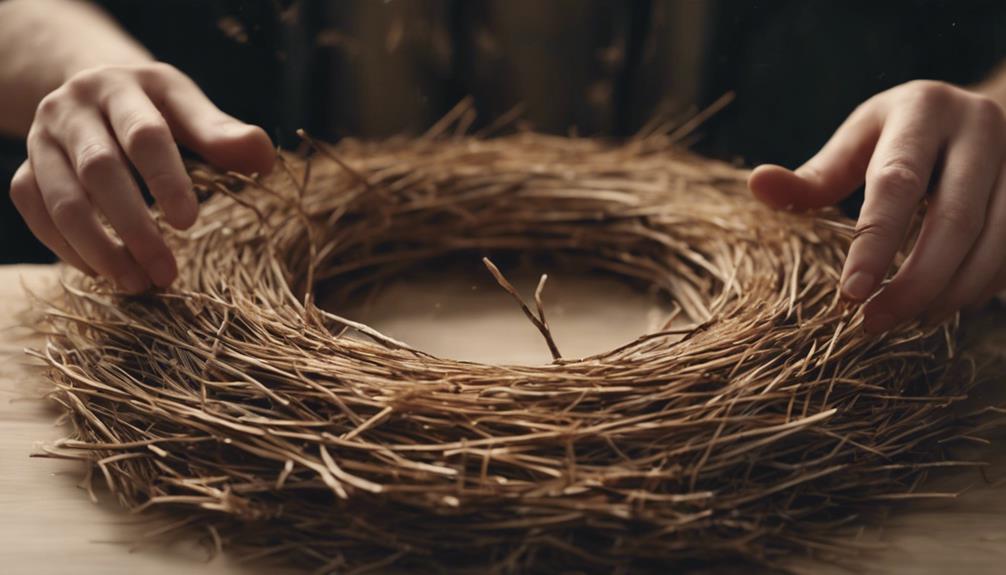
Adding pine straw in a circular pattern serves as a foundational step in creating a robust and visually appealing bird nest. Here are some key points to keep in mind when incorporating pine straw into your DIY bird nest:
- Weave pine straw in a circular pattern to provide a sturdy base for the nest, ensuring stability and structural integrity.
- Pine straw brings a natural and rustic element to the nest's design, enhancing its overall aesthetic appeal.
- Layer the pine straw evenly to offer support and structure to the nest, making it a comfortable and secure environment for birds.
- The circular weaving technique helps in shaping and defining the form of the nest, creating a well-defined structure.
- Make sure to securely weave the pine straw to prevent unraveling during the nest-making process, ensuring durability and longevity for the nest.
Shape the Nest and Dry Glue

Let's discuss some key points about shaping the nest and drying the glue.
Nest shaping techniques involve gently molding moss and sticks into a round form for structural integrity.
Applying glue and using a heat gun for drying are crucial steps to guarantee that your DIY nest stays sturdy and ready for display.
Nest Shaping Techniques
To shape the nest and guarantee its structural integrity, we utilize a method of weaving sticks into the moss and then applying heat to dry the glue thoroughly. This process ensures a secure and stable foundation for the nest, making it suitable for holding decorations or eggs.
Here are some key nest shaping techniques we employ:
- Weave sticks into the moss: By intertwining sticks within the moss base, we create a sturdy framework that mimics natural bird nests.
- Apply heat to dry the glue: Using a heat gun, we carefully dry the glue to firmly bond the materials together, reinforcing the nest's structure.
- Mold into a round form: Shaping the nest into a circular structure not only enhances its appearance but also provides a cozy space for decorative elements.
- Confirm complete glue dryness: It's important to wait until the glue is fully dried before proceeding with adding embellishments to prevent any dislodging.
- Display creatively: Once the nest is complete, consider showcasing it on a DIY cake stand or beneath a cloche for a charming decorative touch.
Drying Glue Application
To guarantee the stability and durability of the nest structure, we shape the materials into the desired form and then apply a thin, even layer of hot glue for secure bonding. Proper glue application is essential to make sure all parts of the nest are securely attached. Utilizing a heat gun aids in drying the glue efficiently. However, caution must be taken not to overheat the glue, as this can potentially damage the nest materials. Below is a table outlining the steps involved in drying glue application:
| Glue Application Steps | Description | Importance |
|---|---|---|
| Shape Materials | Mold materials into desired form | Ensures proper fit |
| Apply Thin Layer | Evenly spread hot glue on surfaces | Secure bonding |
| Use Heat Gun | Dry glue quickly and effectively | Speeds up the process |
Nest Construction Tips
For shaping the nest and ensuring secure bonding, weave sticks into the moss and apply spray glue to create a sturdy structure. Incorporate green moss to give the nest a natural appearance.
Here are some nest construction tips to help you make a nest:
- Weave sticks into the moss for added structure and support.
- Use spray glue to hold the moss and sticks together, creating a durable nest shape.
- Utilize a heat gun to quickly dry the glue, ensuring a secure bond.
- Add finishing touches such as displaying bluebird eggs in the nest for a realistic touch.
- Enhance the overall presentation by placing the nest on a handmade DIY cake stand and incorporating decorative elements like a cloche and vintage door sign.
These tips will assist you in creating a beautiful and authentic bird nest that can be a lovely addition to your home decor or nature-inspired displays.
Display With Bluebird Eggs

Adding a touch of realism, we display the DIY nest with delicate bluebird eggs. These eggs are an important element in creating a lifelike appearance for our DIY creation. Bluebird eggs are known for their light blue color, often speckled with tiny dots, adding to the overall authenticity of the display. Their oval-shaped structure, resembling miniature works of art, enhances the natural look we aim to achieve.
Strategically placing the bluebird eggs within the nest is essential for a visually appealing outcome. The combination of the nest and these small, intricately designed eggs creates a charming display that can brighten any room.
Frequently Asked Questions
How Do You Make Your Own Nest?
To make our own nest, we gather moss and twigs as primary materials. Cut the moss into small pieces and layer it over twigs for the base. Secure the moss with a glue gun for a sturdy structure.
Optionally, add artificial eggs or decorations for enhancement. To guarantee the moss, store it in a cool, dry place away from direct sunlight. This method guarantees longer-lasting nests with a natural aesthetic.
How Do You Make a Nest for Yourself?
When making a nest for ourselves, we carefully select materials like twigs, moss, and a glue gun to craft a cozy abode.
By shaping a sturdy base with twigs and layering it with moss, we guarantee a comfortable dwelling place.
Consider personalizing with artificial eggs or decorations for a unique touch.
Opt for preserved moss for longevity and store the nest in a cool, dry spot.
Whether for Easter decor or home accents, the possibilities are endless!
How Do You Make a Simple Nest for Kids?
To create a simple nest for kids, gather materials like twigs, grass, and moss. Encourage children to shape the nest with their hands or small tools. Use non-toxic glue or natural elements to secure the nest structure.
Let kids express creativity by adding small decorations such as feathers or tiny eggs. Engaging children in this process fosters a deeper appreciation for nature and enhances their imaginative skills.
How Do You Make a Makeshift Nest?
To make a makeshift nest, gather Spanish moss, twigs, and a glue gun. Cut the moss into small pieces and form a base using twigs.
Layer the moss over the twigs and secure it with the glue gun for stability. Consider adding artificial eggs or small decorations for a decorative touch.
For longer-lasting nests, opt for preserved moss and guarantee proper storage to maintain its quality.
Conclusion
To sum up, creating a DIY nest can be a simple and rewarding project. By following the step-by-step instructions outlined in this article, you can easily craft a beautiful and natural-looking nest to display in your home.
Remember to gather all the necessary materials, shape the nest carefully, and add the finishing touches for a realistic touch. Let your creativity soar as you bring this unique piece of nature into your living space.
Just like a bird building its nest, you too can create a cozy and inviting atmosphere in your home.
- About the Author
- Latest Posts
Introducing Ron, the home decor aficionado at ByRetreat, whose passion for creating beautiful and inviting spaces is at the heart of his work. With his deep knowledge of home decor and his innate sense of style, Ron brings a wealth of expertise and a keen eye for detail to the ByRetreat team.
Ron’s love for home decor goes beyond aesthetics; he understands that our surroundings play a significant role in our overall well-being and productivity. With this in mind, Ron is dedicated to transforming remote workspaces into havens of comfort, functionality, and beauty.
Decor
Timeless Beauty: Vintage Glass Globes
Open the door to a world of enchanting vintage glass globes, where timeless beauty and intricate designs await your discovery.
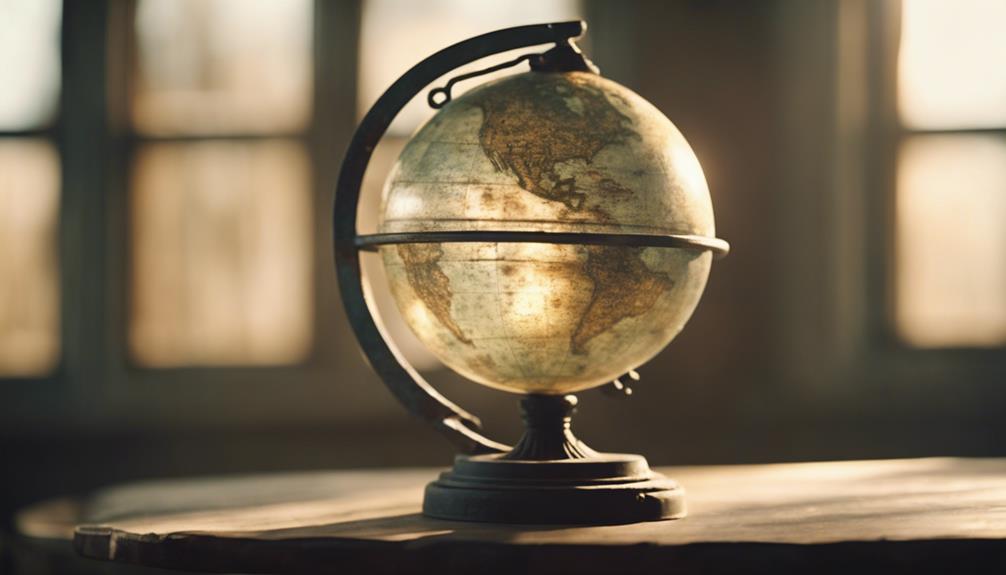
Vintage glass globes represent a timeless allure with intricate designs, enchanting colors, and enduring charm that have fascinated collectors and design aficionados for ages. These pieces showcase intricate patterns and delicate craftsmanship, emanating a sense of refinement and elegance from past eras. Their ability to diffuse light beautifully with frosted glass and colorful accents adds vibrancy to any space. Envelop yourself in a cozy atmosphere that seamlessly blends classic aesthetics with comforting nostalgia. Explore the versatile applications, various sizes, shapes, and designs of vintage globes to enhance your space with their enduring beauty and charm.
Key Takeaways
- Vintage glass globes offer intricate designs and craftsmanship, showcasing unique colors and patterns.
- Their elegance lies in delicate craftsmanship, frosted glass for beautiful light diffusion, and colorful accents.
- Nostalgic charm emanates from glass globes, evoking an enchanting allure and cozy atmosphere with warm glows.
- Create tranquility with their soft lighting, intricate designs, and peaceful ambiance, blending sophistication and peace.
- Versatile beauty in vintage globes with intricate detailing, diffused light, and various designs for customization in any space.
Timeless Appeal of Vintage Glass Globes
With their intricate designs and craftsmanship, vintage glass globes exude a timeless charm and elegance that fascinates collectors and enthusiasts alike. These glass globes, steeped in nostalgia, are coveted for their unique colors, shapes, and patterns that add a touch of the past to any contemporary space.
Collectors appreciate the quality and beauty of vintage glass globes, often using them as decorative pieces to elevate the ambiance of their homes. The intricate designs and delicate craftsmanship of these globes showcase the artistry and attention to detail that went into their creation, making them not just decorative items but also pieces of art.
Their versatility as decor pieces allows them to enhance the aesthetic of any room, creating a warm and inviting atmosphere that resonates with a sense of history and sophistication. Vintage glass globes truly stand the test of time, fascinating generations with their enduring charm and beauty.
Elegance in Vintage Glass Design
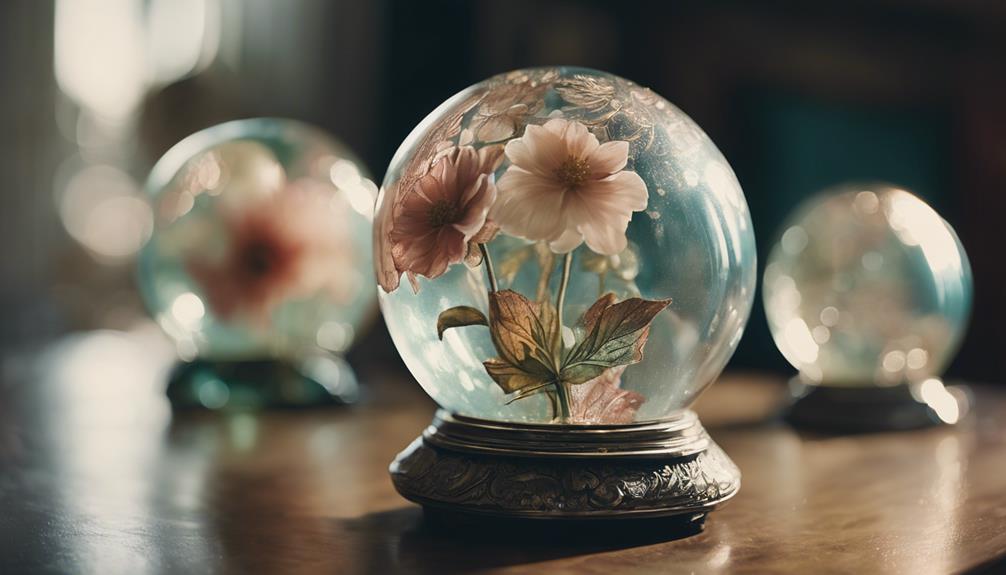
Vintage glass design exudes elegance through intricate patterns and delicate craftsmanship, capturing the essence of past eras. The sophistication of vintage glass globes is evident in the attention to detail, with many showcasing elaborate designs that reflect the artistry of bygone times. Crafted with precision, these globes often feature frosted glass that diffuses light beautifully, along with colorful accents that add a touch of vibrancy to any space.
Whether used as lamp shades, ceiling fixtures, or decorative accents, vintage glass globes bring a sense of refinement to interior decor.
Collectors are drawn to the allure of vintage glass globes, appreciating the historical significance and meticulous craftsmanship that went into creating these pieces. The timeless beauty of these globes adds a level of sophistication to any collection, making them coveted items for enthusiasts seeking to preserve the elegance of the past.
Nostalgic Charm of Glass Globes
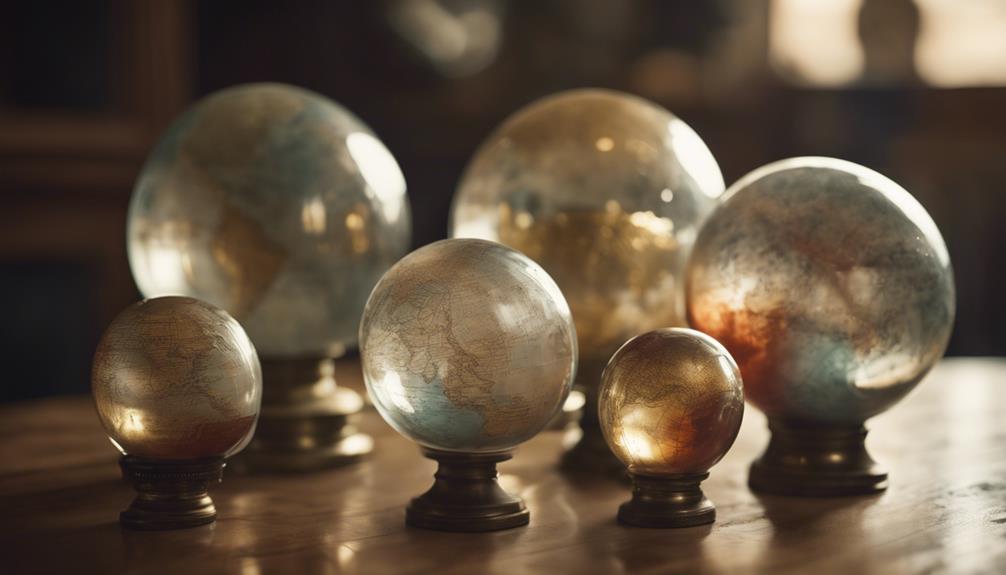
Radiating an enchanting allure that evokes a sense of nostalgia, glass globes bring a timeless charm to interior spaces with their intricate designs and warm glow.
The nostalgic charm of vintage glass globes lies in their ability to transport us to bygone eras, where intricate details and delicate designs were commonplace in lighting fixtures. These globes, with their soft glow and inviting ambiance, infuse a room with a cozy atmosphere that's both classic and comforting.
The enduring appeal of glass globes is rooted in their vintage aesthetics, which effortlessly blend with a variety of interior styles.
Their versatility in shapes, sizes, and colors allows for a personalized touch, making them a popular choice for those seeking to add a touch of elegance to their living spaces.
Whether suspended from a ceiling or adorning a table lamp, glass globes exude a timeless beauty that transcends trends, ensuring they remain a staple in interior décor for years to come.
Creating Tranquility With Glass Globes

To enhance the ambiance of a space with a serene and calming atmosphere, consider incorporating vintage glass globes renowned for their soft lighting and tranquil ambiance. These timeless pieces exude elegance through their delicate craftsmanship and intricate designs, adding sophistication to any setting.
The soft and diffused lighting emitted by glass globes not only enhances the aesthetic of the room but also creates a sense of peace and tranquility.
With a wide range of sizes and shapes available, vintage glass globes can complement various decor styles, from traditional to modern, offering a versatile option for aesthetic enhancement. Whether suspended from the ceiling as a statement piece or used as table lamps to create a cozy corner, these globes bring beauty and elegance to any space.
Versatile Beauty of Vintage Globes
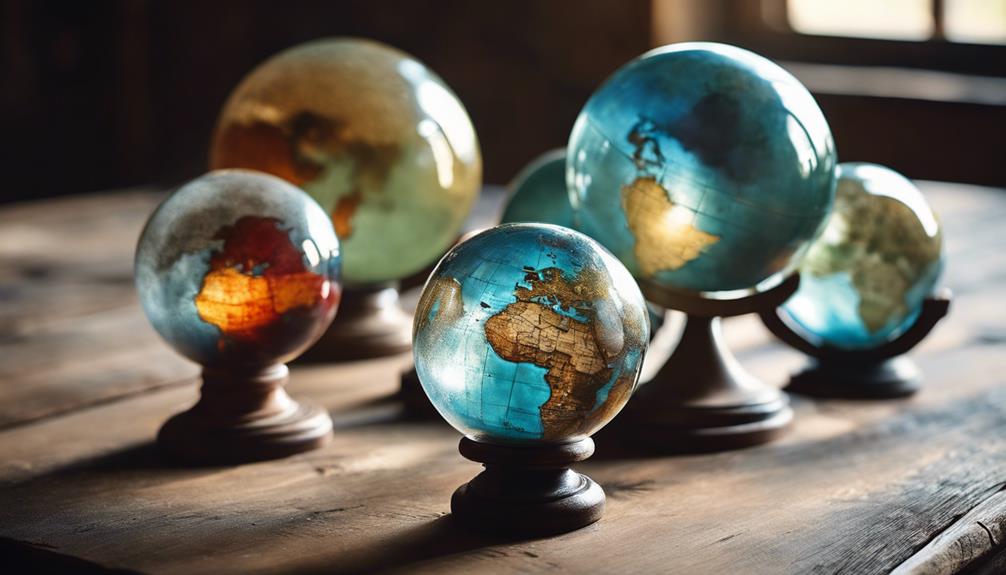
Exploring the versatility of vintage glass globes reveals their ability to enhance any space with timeless beauty and charm. These globes, with their intricate detailing and craftsmanship, exude a unique elegance that can elevate the aesthetic of a room effortlessly. They come in various sizes, shapes, and designs, allowing for customization to suit different decor styles. Vintage glass globes can serve multiple purposes, functioning as pendant lights to illuminate specific areas, as chandeliers to create a focal point, or even as standalone decorative pieces for a touch of sophistication.
| Vintage Glass Globes | Benefits |
|---|---|
| Intricate Detailing | Adds elegance and sophistication to any space |
| Versatile Applications | Can be used as pendant lights or chandeliers |
| Diffused Light | Creates a cozy atmosphere with soft illumination |
The diffused light that emanates through these globes not only provides adequate lighting but also contributes to a warm and inviting ambiance, making the space feel more intimate and welcoming.
Frequently Asked Questions
Can Vintage Glass Globes Be Used Outdoors?
Yes, vintage glass globes can typically be used outdoors, provided they're made of durable materials like tempered glass. Outdoor conditions may expose them to elements like wind, rain, and sunlight, so selecting robust globes is essential. Make sure proper installation to prevent damage from environmental factors.
Regular maintenance, such as cleaning and inspection for cracks, will help prolong their lifespan. Following these practices will help preserve the vintage glass globes' aesthetic appeal while enjoying them in outdoor settings.
Are Vintage Glass Globes Fragile or Durable?
Vintage glass globes, whether antique or modern, can vary in durability. While they exude charm and elegance, they often require delicate handling due to their fragile nature.
However, with proper care and maintenance, these globes can withstand the test of time. It's essential to avoid subjecting them to harsh impacts or extreme temperatures, as this can lead to breakage.
Regular cleaning and gentle handling are key to preserving their beauty for years to come.
How Do I Clean and Maintain Glass Globes?
When maintaining glass globes, a gentle approach is essential. Begin by dusting regularly with a soft, lint-free cloth.
For deeper cleaning, mix mild dish soap with warm water, dampen a microfiber cloth, and carefully wipe the globe. Avoid harsh chemicals or abrasive materials that may scratch the glass.
Guarantee thorough drying to prevent water spots. Regular upkeep will preserve the clarity and beauty of your glass globes for years to come.
Can Vintage Glass Globes Be Customized or Personalized?
While one may dream of a vintage glass globe sporting their initials or a custom design, altering these pieces can diminish their historical and aesthetic value.
Authenticity is paramount in preserving the charm and uniqueness of vintage items. However, if personalization is desired, consider commissioning a skilled artisan to create a separate custom piece inspired by the vintage globe.
This way, one can enjoy a personalized touch without compromising the integrity of the original vintage glass globe.
Are Vintage Glass Globes Suitable for All Types of Lighting Fixtures?
Vintage glass globes are versatile and suitable for various lighting fixtures. They can enhance the aesthetic appeal of chandeliers, pendants, sconces, and even table lamps.
Their timeless elegance and adaptability make them a popular choice for both traditional and contemporary settings. Due to the wide range of sizes and styles available, vintage glass globes can effortlessly complement different types of lighting fixtures, providing a touch of sophistication and charm to any space.
Conclusion
To sum up, vintage glass globes offer a timeless beauty that adds elegance and charm to any space. Whether used as a centerpiece on a dining table or as a pendant light in a living room, these globes create a sense of tranquility and versatility that's unmatched.
One example of their impact is how a vintage glass globe pendant light can transform a modern kitchen into a cozy and inviting space, adding a touch of nostalgia and sophistication.
- About the Author
- Latest Posts
Introducing Ron, the home decor aficionado at ByRetreat, whose passion for creating beautiful and inviting spaces is at the heart of his work. With his deep knowledge of home decor and his innate sense of style, Ron brings a wealth of expertise and a keen eye for detail to the ByRetreat team.
Ron’s love for home decor goes beyond aesthetics; he understands that our surroundings play a significant role in our overall well-being and productivity. With this in mind, Ron is dedicated to transforming remote workspaces into havens of comfort, functionality, and beauty.
-

 Vetted4 weeks ago
Vetted4 weeks ago15 Best Contact Paper for Kitchen Cabinets to Elevate Your Home Decor
-

 Vetted2 weeks ago
Vetted2 weeks ago15 Best Poe Cameras for Home Security – Reviews & Buying Guide
-

 Vetted4 weeks ago
Vetted4 weeks ago15 Best Drain Snakes to Unclog Your Pipes Like a Pro
-

 Beginners Guides6 days ago
Beginners Guides6 days agoI Inhaled Vinegar Fumes
-

 Vetted4 weeks ago
Vetted4 weeks ago14 Best Stationery Brands for Your Next Writing Adventure
-

 Beginners Guides2 weeks ago
Beginners Guides2 weeks agoSwinger Porch Light Color
-

 Mardi Gras Decoration4 weeks ago
Mardi Gras Decoration4 weeks agoWhy Does Hobby Lobby Not Do Mardi Gras?
-

 Vetted2 weeks ago
Vetted2 weeks ago15 Best Blinds for Bathroom Windows to Enhance Privacy and Style




















